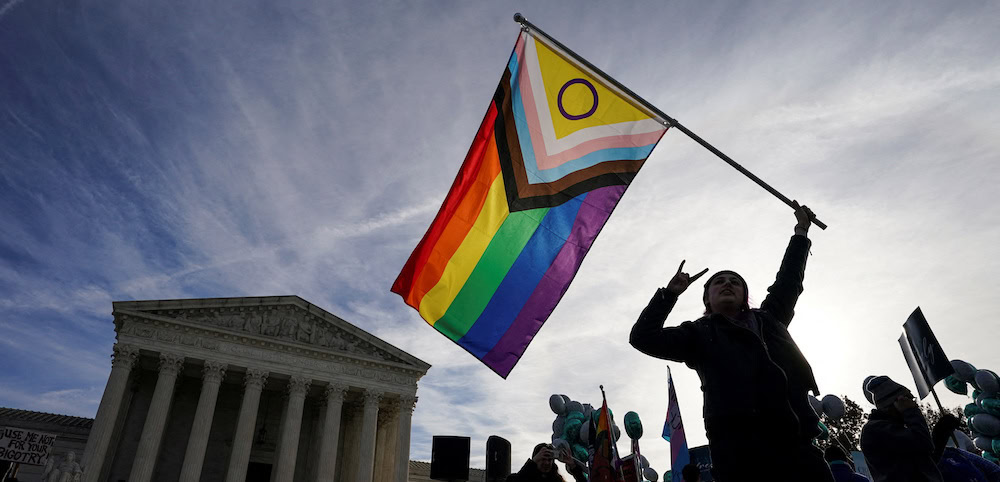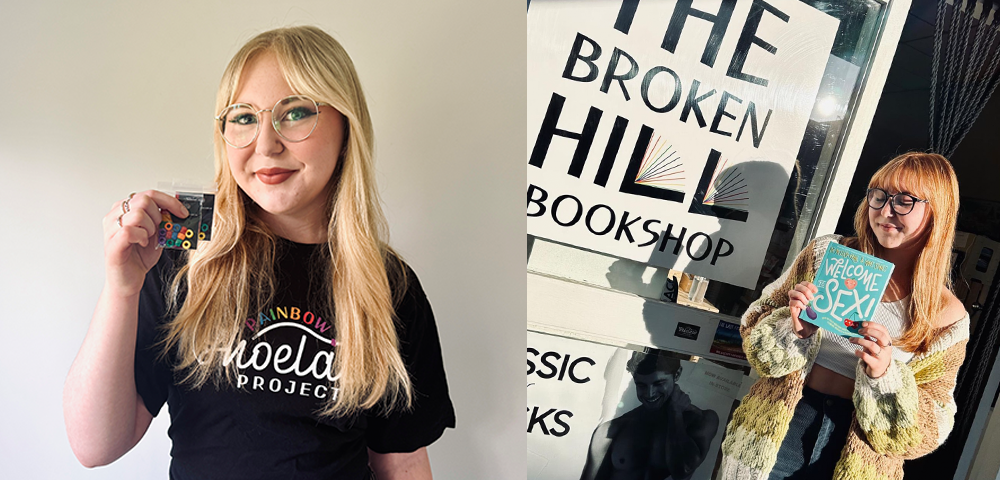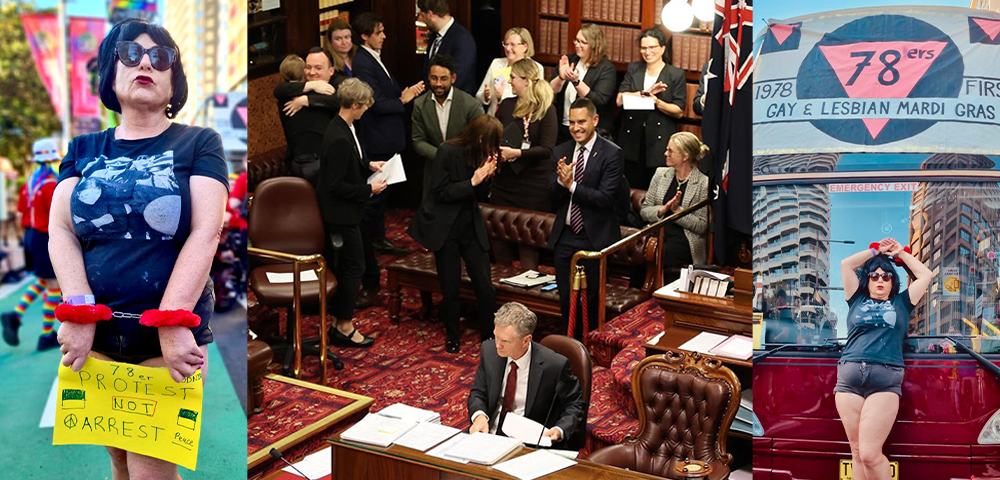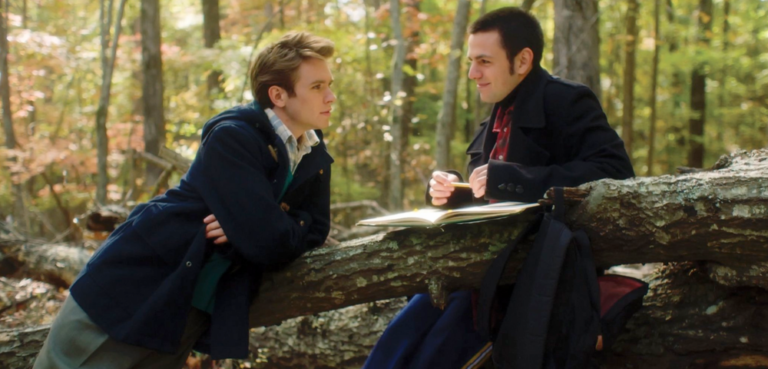
Intersex-related research must have direct input from intersex community
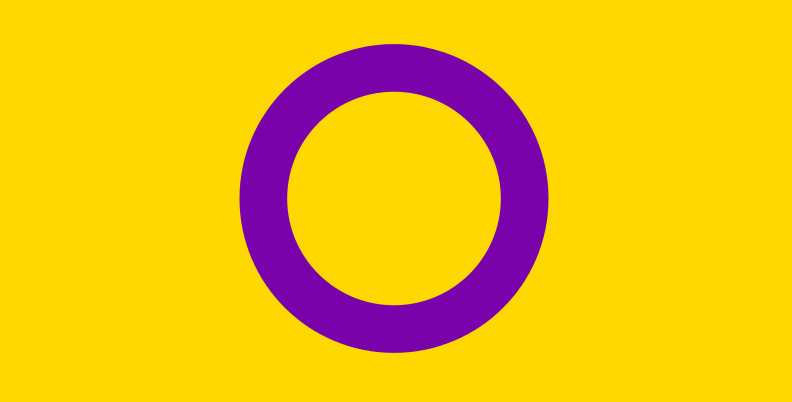
OCTOBER 26 is Intersex Awareness Day, a day about those of us born with sex characteristics that don’t fit typical binary notions for male or female bodies.
It’s the 19th Intersex Awareness Day since a bunch of “hermaphrodites with attitude” in Boston first picketed outside a conference of paediatric doctors to protest medical interventions on infants and children born with intersex traits.
[showads ad=MREC]Many of the same medical interventions are still practiced today — surgical and hormonal interventions that aim to make intersex bodies and psychological development “normal”. This is supposed to address stigma but, in reality, diagnosis and treatment have a circular relationship with stigma. Medical interventions are explicitly intended to make intersex bodies conform to social norms for a specific sex or gender.
At a time when almost every Australian LGBT organisation has become an LGBTI one (the I represents intersex), and funders continue to fund the same work in the same organisations they supported when funding LGBT work, there remains little understanding of the medicalisation of intersex. In its place there is often a focus solely on identity, performativity, and legal classifications. But these have tightly-bound limits, and the decades since the Boston demonstration have seen increased disordering of intersex traits, what some call “exponentially accelerated bio-medicalisation”.
The last year has seen many examples of this and, thankfully, some positive developments.
In competitive sport, a 2013 medical journal documented how four women athletes from developing nations were subjected to clitoridectomies and sterilisation when they sought to compete in the London 2012 Olympics. The policy that forced this treatment on them excluded women with naturally high levels of testosterone — but it was successfully challenged in a July court judgment because it lacked an evidenced scientific basis.
In recent weeks, the Hudson Institute of Medical Research in Melbourne announced the discovery of a new “syndrome leading to intersex”, one of at least 40 different and mostly genetic entities already known. The institute remarked that only 30 per cent of people with intersex traits are diagnosed with a “specific genetic cause or disorder”. It also acknowledges high levels of trauma and stress amongst intersex people, hoping that genetic research “will lead to earlier diagnosis, better treatment and decreased stress”. The role of medical treatment in creating trauma, and their profound impact on education, work and intimate lives, was ignored.
In and of itself, a greater understanding of the cause of intersex traits might be a good thing — but the context for such research shows otherwise. Generous public funds support genetic research programs, but peer and family support by intersex-led community organisations remain entirely unfunded.
At the same time, genetic testing that frames intersex traits as “serious genetic conditions” already leads to IVF treatment to prevent intersex births. In the UK, for example, those “serious” genetic variations include those of all four elite women athletes wishing to compete in the London 2012 Olympics. Australia’s National Health and Medical Research Council is currently considering similar rules, but the primary bases for determining their “seriousness” lie in stigma and social anxiety.
Intersex-led services are based on the simple principle of self-acceptance, and built upon shared experience. Intersex civil society organisations are the only organisations aware of our whole lifecycle — from conception through lived experience to end of life. They are also the only organisations capable of effective long term follow-up and support. Parents and prospective parents need direct contact with us.
In September this year, the UN launched a fantastic fact sheet on intersex, detailing human rights violations and proposing action points for governments, media and allies. It was followed in September by a statement to the UN Human Rights Council and an expert meeting on intersex.
I was fortunate to participate in the expert meeting, alongside other intersex human rights defenders, doctors and biomedical ethicists, child rights advocates and other experts. Afterwards, a US geneticist and paediatrician described how human rights “tactics” will “prevent us from actually understanding what’s going on” — as if intersex bodies exist to satisfy medical curiosity.
In the same month, an editorial in the prestigious British Medical Journal demonstrated real clinical leadership, stating: “Paediatricians’ confidence in the ability to construct genital anatomies to meet cultural expectations of appearance and function has not been borne out… experts in surgery have so far been unable to reach a consensus.
“Parents may not realise that they are de facto opting for experimental surgery on their children. Furthermore, their emotional states during decision making may not be optimal… Parental regret can be high.”
Two years ago the Australian Senate agreed, but its recommendations have been sidestepped by the Federal Government: they are a matter for states and territories, and clinicians, to resolve.
While our governments have prevaricated and focused on sex classifications, Malta this year became the first countryto outlaw modifications to the sex characteristics of infants and children with intersex traits. It provides a model for Australian governments to adopt.
Morgan Carpenter is the president of Organisation Intersex International Australia. For more information, visit oii.org.au You can also follow him on Twitter via @morgancarpenter
____________________________
**This article was first published in the November edition of the Star Observer, which is available to read in digital flip-book format. To obtain a physical copy, click here to find out where you can grab one in Melbourne, Sydney, Brisbane, Adelaide, Canberra and select regional/coastal areas.
RELATED: WHY INTERSEX AWARENESS DAY IS IMPORTANT
RELATED: INTERSEX EXPLAINED AND THE ISSUES THAT CONFRONT US
[showads ad=FOOT]





